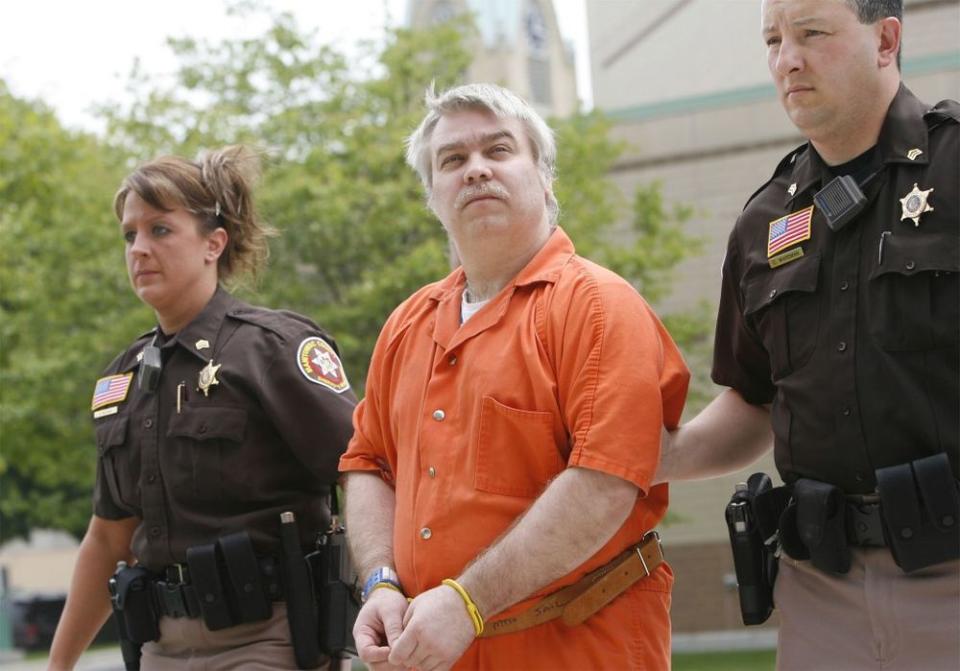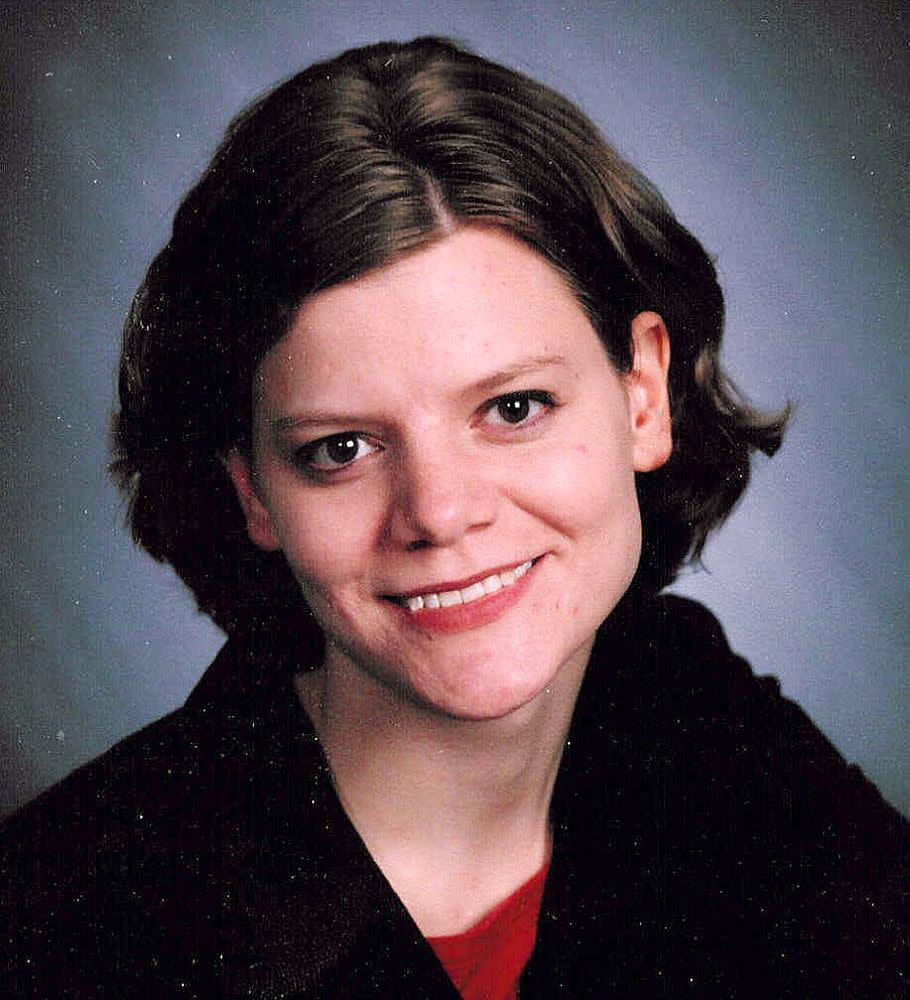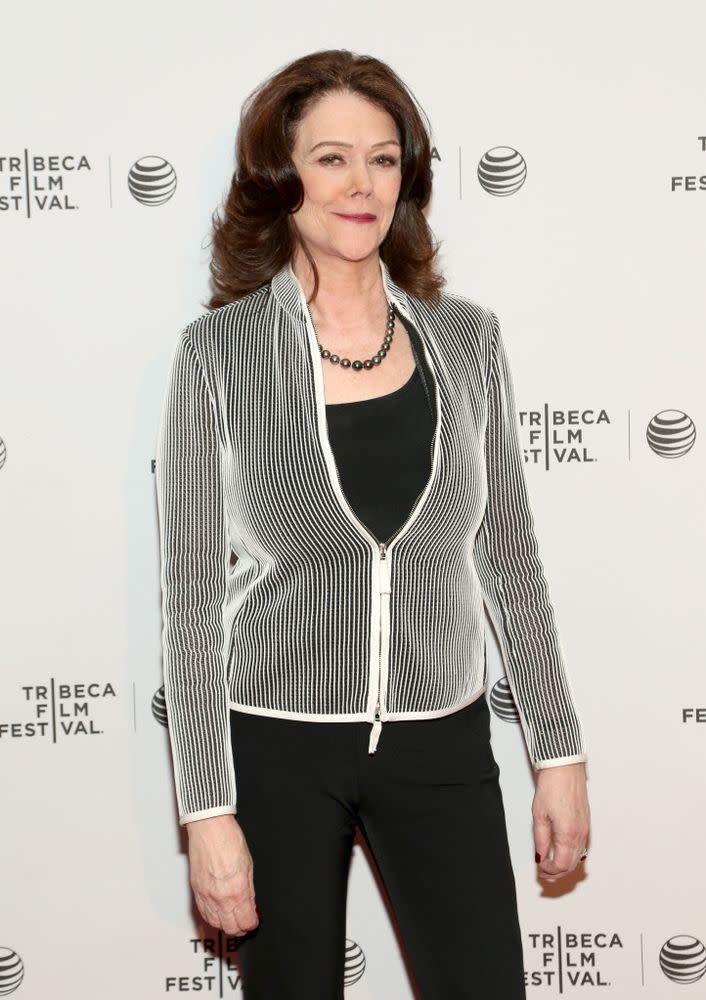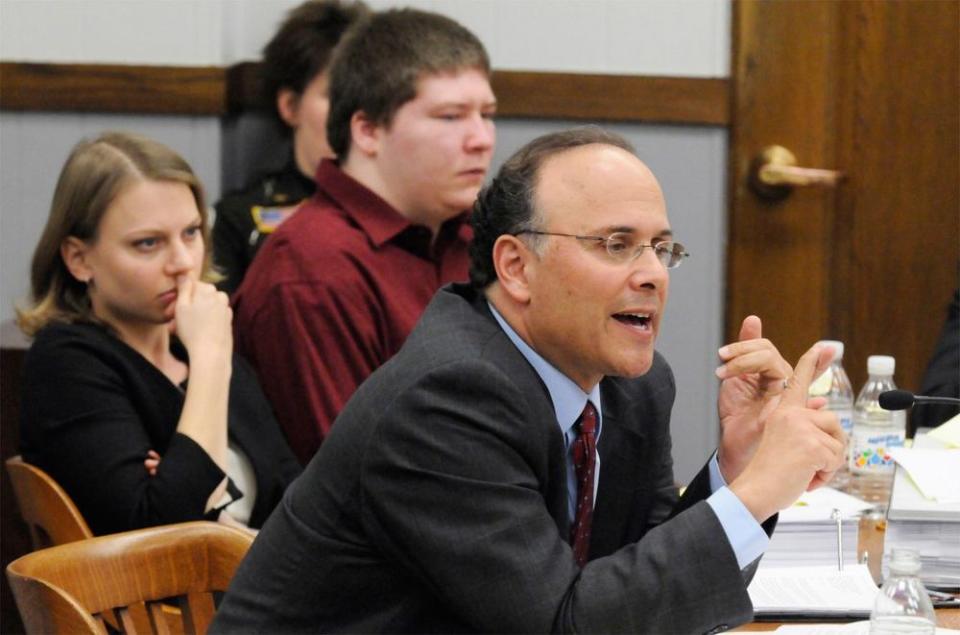Making Making a Murderer Part 2: Why They Can't Stop Following Steven Avery and Brendan Dassey
Moira Demos and Laura Ricciardi had worked largely in obscurity for years covering the murder case against Steven Avery and his nephew Brendan Dassey, both of whom were found guilty of killing photographer Teresa Halbach in Wisconsin 2005.
Ten years after Halbach’s death, Demos and Ricciardi’s account of the prosecution — which brought national attention to Avery and Dassey’s claims of innocence and allegations of planted evidence, a coerced confession and a coverup — was released on Netflix as Making a Murderer. It was a phenomenon.
On Friday, the series released part 2: 10 new episodes from Demos and Ricciardi documenting Avery and Dassey’s push for freedom.
PEOPLE recently spoke with the filmmakers, who resumed filming in June 2016 and wrapped in July, about their ongoing interest in the Halbach murder case. Plus: lessons they hope to impart, key themes and some of the trickier decisions they had to make in part 2, in the shadow of their success.
• For more on Making a Murderer part 2 and what has changed in the case in the last three years, subscribe now to PEOPLE or pick up this week’s issue, on newsstands now.
“We really approached part 2 with the same process, the same rigor as we did part 1,” Ricciardi tells PEOPLE.
“Our focus is not on people having a better understanding of this case,” she says. “Our focus is on people having a better understanding of the criminal justice system.”
What follows is transcript of their interview, which has been edited and condensed for clarity.


PEOPLE: Why continue to work on the case? I know the obvious: There was more to do, but to work on one project now for so many years — what was driving you?
Laura Ricciardi: There was such a tremendous response to the first season and nothing we ever could have anticipated, and we understood that people had lots of questions at the end of part 1. And it was clear within months of the launch of part 1 that Steven got a new advocate, Kathleen Zellner, and that she was going to do her best to challenge his conviction and his sentence. And then that would [be] entering a whole new stage of the process, of the post-conviction phase. So we spoke with Kathleen, we understood what her goal and her intention was. I have a background in law, so I knew some of the obstacles she would be facing and we thought, “What a wonderful opportunity to try to address questions that he had at the end of part 1,” [and to] shine a light on a lesser-known part of the system and to do it with Kathleen, who we anticipated would be a very compelling character to follow and work with.
She seems very much kind of like a narrator for part 2 in a way that maybe part 1 didn’t even have. Do you think that’s fair? She’s colorful, she’s very articulate, she’s very sharp.
Moira Demos: We think of Kathleen certainly as the primary engine of the story. She is definitely an active character. And I think the wonderful thing that she offers, which Laura touched on a little bit is: We’ve heard so much from viewers about questions they had and how uncomfortable it is to sit in this place with ambiguity and not knowing. And she’s really a character who was actively in search of answers. And so in a lot of ways she offers a character that [viewers] can go along with who is doing what they would like to be doing, trying to find answers for some of these questions. So she very much serves that role and, as I think Laura mentioned, she is the winningest private post-conviction attorney in the country. There’s a tremendous amount we learned from her and we hope our viewers can learn from her about tactics of approaching a case, about obstacles you face and how to overcome them or divert around them and really new ways of thinking about the system.
I think that what’s important to understand about part 2 is that we are documenting the process of the advocates, whether that be [Dassey’s lawyers, Steven Drizin and Laura Nirider] or Kathleen. And so we are very much showing things from their point of view. They are the people to whom we had the access and we’re going on a journey with them as they’re fighting to challenge the convictions of their clients, who were serving life in prison for crimes they maintain they didn’t commit. So there is a practicality to someone like Kathleen explaining, breaking down her process for us ,because our viewers have to have some base-level understanding of what the post-conviction process looks like in order to engage with the material and to go on a journey with her.
It’s interesting you mentioned that shift — or maybe it’s not fair to say it’s a shift — but it certainly struck me that part 1 sat much more in the ambiguity of this case and certainly in Steven Avery’s life. Part 2 seems much less ambiguous about his innocence or guilt, that a viewer will come away with the feeling that, you know, this guy’s not guilty at all, Kathleen makes a really persuasive case, how dare he be in prison? Did you view that as a change in perspective and did you discuss it?
Demos: We used to talk about how, you know, hindsight is 20/20, but the real question is: Can you see what’s happening in front of your eyes in the moment? And if you think about part 1, we covered I think 20 years in episode one [laughs]. When we had people with distance and perspective and the ability to look through all of the materials, talking about what had happened in 1985 [with Avery’s wrongful conviction for rape], there was a lot of clarity and there were a lot of answers. And then things happened and then you’re just going in relatively real time through events, and real life is confusing and real life does have that ambiguity and nobody in the story necessarily had the perspective to slowly understand what was happening.
And as filmmakers, we’re only following people directly involved in the story for that. That’s who we’re with and viewers are just on that roller coaster journey with them. And then by definition, the nature of post-conviction law, you are looking back at the conviction. So now here we are, more than 10 years later. The actions of Laura and Steve, looking back at the interrogations that took place with Brendan Dassey, and with Kathleen, looking back at what happened in the investigation, what happened at the trial? What happened with the prosecution, what happened with the defense team? You had characters who, what they are doing is trying to unpack what actually happened deeper into it. So I think that’s what is, what part 2 offers viewers is not only this journey with these characters into this new phase, but also I think they will come away with a deeper understanding of what they saw in part 1.

So much of part 2 is Kathleen pulling apart the forensic case against Steven and so much of that is her reliance on her own experts. I had a thought that a viewer maybe will be left with like, “There’s one expert from the prosecution side, now Kathleen has her own expert saying the opposite.” Were you tempted to go even deeper into that talking head science territory, even getting more experts and really just like wading even deeper into who is right and wrong?
Ricciardi: We’re [following] what Kathleen is doing, it’s her case. So we would never presume, and I mean so many things about part 1 we would never impose in any way our opinions or our thoughts about what she should or should not be doing with respect to her case. It’s a one-way street with her. We’re not giving input on anything that she’s doing. With respect to the types of experts she had, I think that’s a perceptive question about whether it is just a “he said, she said,” and I think that you certainly could ask Kathleen about that. I mean, I’ve asked her about that and she’s talked about the qualifications, the relative qualifications of the state experts. She’s bringing in world-class experts who’ve been published and who have groundbreaking work in their field.
Demos: Yeah. I was just thinking while Laura was talking, this idea that possibly the viewer, you’re listening to these experts thinking, “Well, is there another expert who might think differently?” And Kathleen is trying to win Steven a trial. But as she explains, the first step in doing that is getting him an evidentiary hearing. And that would be exactly the place where that would happen. She’s hoping to put her expert on, have them put their expert on and both present their sides. I think that her goal is to get that forum where that can happen. She’s the active character here, but the state actually does not have to do anything at this stage in the process until she files something or a hearing is called. They’re not producing their testimony or their witnesses, so we can’t really generate that or document that on our own.
Laura, you’ve said that it wasn’t the case so much as the person that first attracted you to work with Steve. What about him as a person continues to draw you in? Is it him personally as well as the case?
Ricciardi: Absolutely. We’ve said all along that initially what drew us to the story was Steven’s unique status as a DNA exoneree charged in a new crime. Now, Kathleen believes Steven’s claims that he’s been wrongly convicted twice and I think that’s certainly unprecedented. And since he was really this incredible window for us into the system, it seems that the unimaginable has happened to this person, and his willingness to give up the type of access he and his family have given us is an incredible gift. And we think that his story offers tremendous social value. We think that there’s a lot that can be learned from his story, and that’s not speaking at all to his guilt or innocence. It’s just speaking to his, as we’ve said, his experiences [being] accused in the American criminal justice system and now his experience as someone convicted and imprisoned in the system.
One of the things that really stood out to us this season and Kathleen explained it to us early on — and we would speak to Steven separately actually and they both said the same thing — which for them is: This is about transparency. This is about truth. Steven and Kathleen and Laura and Steve and Brendan, they are the ones who are fighting for transparency. They are the ones asking the courts to take a close and careful look at these cases. And they’re saying if the court would do that, that they would see that there has been an injustice here. And what it really comes down to is: Was the process fair? And their argument is that it wasn’t. So I think it says a lot, too, to have the people who are challenging their convictions who are unafraid of what the courts would see if the court would take that close and careful look, and they’re the ones saying, “The state should turn over all evidence, open up the case file, show us what there is, we’re not at all afraid that any of it will implicate us.”


Documenting this post-conviction process so closely is really documenting the nuts and bolts of Kathleen undercutting the prosecution, and a lot of that is her pointing fingers at various people who were never charged in the crime. Journalistically, perhaps ethically, how did you approach that piece of it? These people didn’t want speak to you, so how do you deal with that? They were never arrested.
Ricciardi: That’s something we took very seriously in telling this part of the story because everyone in the story has a reputational interest. But I think I want to correct one thing you said. [Everything] included in the series is part of the public filings, with respect to [alleged other suspects]. It’s all part of the public filings. And I think the most important thing to keep in mind, and this is always what we had at the forefront of our minds, is while this is a legal theory of Kathleen’s and hasn’t been proven in any way, she does as Steven’s attorney have a right to develop these theories. And what’s important is that she’s doing all of this within a legal framework. She’s not doing it to cause harm and she’s certainly not in a position to prosecute anyone. What she explained to us and what we documented is that she is, as part of her re-examination of the case, she is trying to better understand what possibly could have happened to Teresa Halbach and who could have done it. And she does lay out the legal requirements of naming of a third-party suspect.
It seems to me there are two issues: Kathleen’s legal obligation to zealously seek out these possible suspects, whom she names. And then as documentarians, just because she has an obligation to make these arguments in court, did you feel that you would need to present all of that knowing that there might be this reputational issue? I just wonder if there are going to be all the same people online who devoured this case who might then be Googling these alleged suspects and wondering where are they now, what’s their deal? And in some ways the show has an active role in making people aware of them, even though their connection to the case is unproven.
Demos: It is something that we had to think through. But when it comes down to [it], these theories are essential pieces of the argument she’s making about whether his defense attorneys performed adequately. And as in part 1, we’re assessing a huge mass of information — how do you get thousands of hours into 10 hours? You have to prioritize the cornerstones of the case and the important things in order to offer a full and complete story. If we had not mentioned this part of the case, it would have not given a picture of what the defense was about when it comes to [post-conviction law] and how this happened.
Ricciardi: And I’d also like to say that we were very diligent and tried to do it in the most responsible way. We weren’t flippant about it. As we said, we reached out to these particular individuals to see whether they would like an opportunity to speak to the allegations and did our research, fact checked and tried to be as inclusive as possible.
How was it working on part 2, knowing that the subjects who basically no one knew outside of the state of Wisconsin are now household names to a lot of people? How did fame change the production process?
Demos: It’s absolutely true that the release of part 1 had a tremendous impact on the world that we had been documenting and on the world that we then set out to document again in part 2. The world you see in part 2 is in many ways a new world because of part 1. And it’s precisely recognizing that that was part of our creative choice to open part 2 in the way that we did, with the montage of the launch of the series and the response and all of the different sides of that and the tunnels of that. There is something that has changed for these families and for the world. Steven and Brandon are sitting in prison and they’re still dealing with being famous and people are selling friendly letters for money or writing fake letters.
A powerful idea in part 2 seems to be that time is kind of wrapping all of this together and hanging over it. The concept of not just the many years spent incarcerated but a ticking clock in terms of a possible release
Demos: Time is such an important part of what incarceration is about and what the cost of incarceration is about. And time is something that’s almost impossible to capture in television, 50 or 60 minutes at a time. It is definitely one of the major themes of this part. One of the other things that we were trying to get across this is the tension between how slowly the courts are moving and this race against time, for Steven in particular, [he] was really concerned about his parents aging and ailing. That was something we really thought was important and we imagine is a universal experience for people who are incarcerated for long terms.
But the other side of this is something we haven’t talked about yet that we think is really important is the experience of the Halbach family and the people who knew and loved Teresa. I mean, our story opens in November of 2015, it’s just a little beyond 10 years since the Halbach family lost Teresa. And we did reach out to them again —
Ricciardi: As we had with part 1 and they declined to participate, and we understand that and respect that. [To] go through something like this, we can’t even imagine. It was really important to try to deal with material in the most responsible way that we could. We think it’s of course important to include Teresa as much as possible, just like with everything else, and that’s the reason why we want to speak to people with firsthand knowledge and firsthand experience.
Y’all have gotten at this idea before: I think a lot of people treat the series as a true crime investigation. But is it also a Trojan horse for social lessons about the criminal justice system?
Demos: True crime is a genre, and genre is often a place in society and entertainment where society can sort of tolerate the exploration of some issues. The fact that it may play as true crime is a bonus and it means more people will see it and more people that need to see it will see it. It really comes down to our ability to and the willingness to ask questions, and our ability and our willingness to have empathy for people that aren’t like ourselves.


